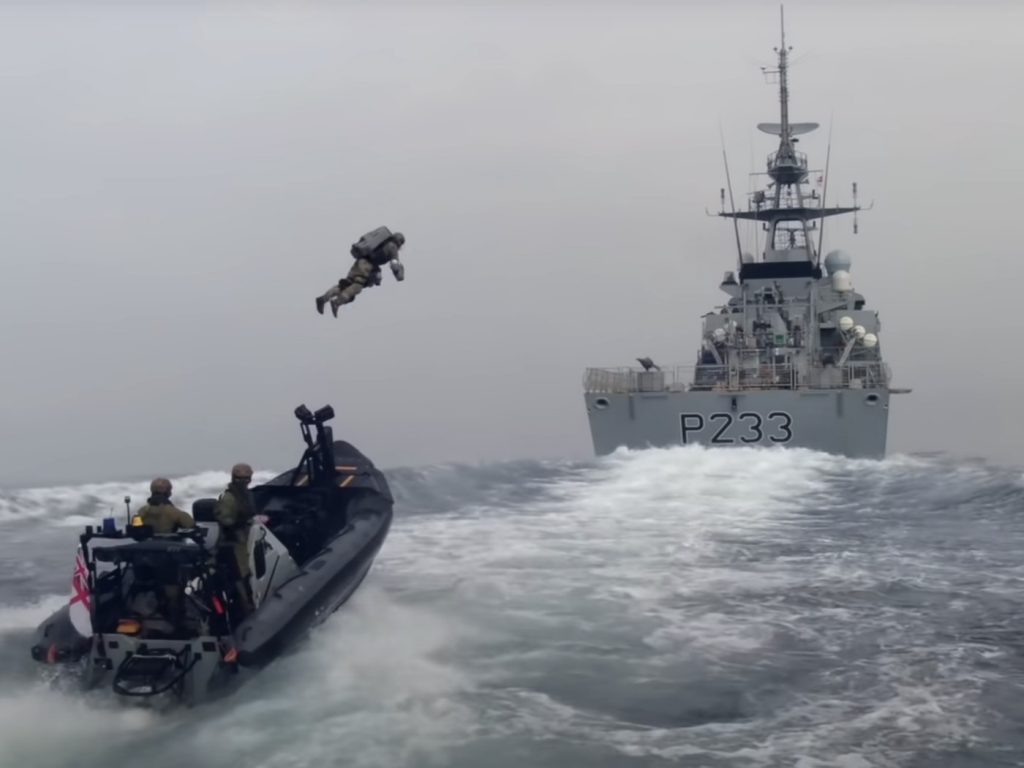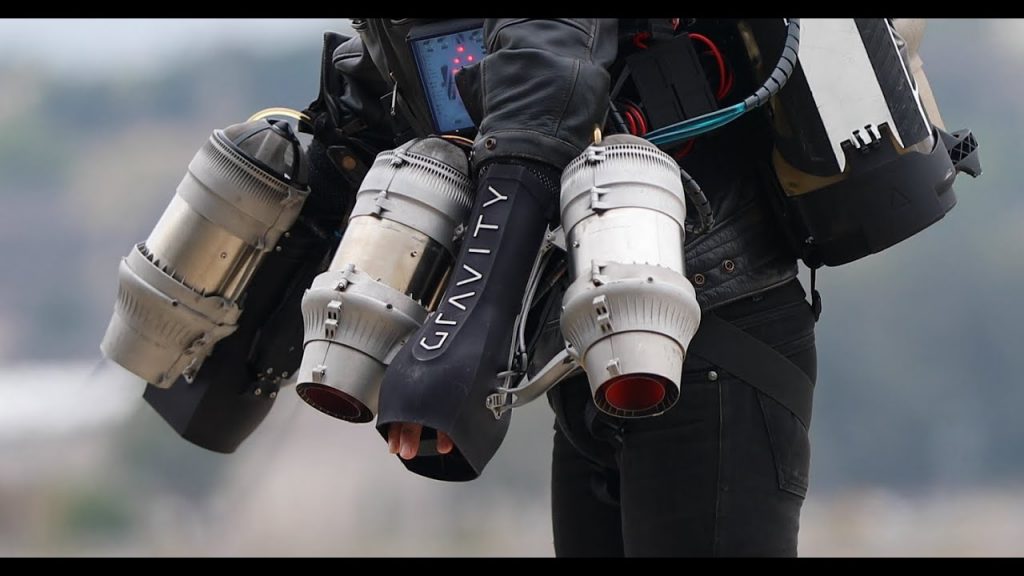It’s likely you’ll have seen Richard Browning, the founder of UK-based human flight company Gravity Industries, test his Jet Suit on board a British warship recently. The design, which has been in development for over four years, is essentially an early-stage iron man suit that grants a single human user the ability of flight.
Constantly looking to improve on the suit, Gravity recently approached 3D printing service provider 3T Additive Manufacturing seeking a lighter-weight version of the turbine arm mounts that had already been developed. Working together on the redesign, the partners were able to 3D print optimized arm mounts made of aluminum, reducing the component count, while making the parts lighter and easier to assemble.
Browning stated, “With rapid innovation comes the need to work with companies who have an equally rapid response rate and an ability to match speed of progression. Working with 3T gives us the opportunity to work together with a really capable and motivated team as we constantly enhance the Jet Suit design.”

The Jet Suit: an antidote to legs
The Gravity Jet Suit is already on its third iteration, and includes two miniature jet engines on each arm, and a fifth engine housed in a backpack. Priced at $440,000, the device is capable of creating over 300 pounds of thrust with 1,050 brake horsepower. Carrying over five gallons of jet fuel, the suit can propel a 200 pound person for up to seven minutes.
With hundreds of test flight events under the belt, Gravity’s technology has proven itself time and again for a whole host of military applications. Just last month, the British Royal Navy used the suit to conduct a “visit, board, search, and seizure” exercise. The high-risk operation usually involves a stealth team hooking onto and infiltrating a moving ship using a fast boat, but Browning was able to hop onto the HMS Tamar, a Royal Navy Batch 2 River-class offshore patrol ship, using just the Jet Suit.
As well as resembling a high-octane Hollywood action sequence, the test exercise served to prove that Gravity’s technology really could provide the armed forces with a level of aerial mobility never seen before.
The technology has also previously been trialed in the UK’s remote Lake District. Working with the Great North Air Ambulance Service, Browning was able to showcase how his suit might make for a great emergency paramedic response tool in a mountainous environment.

How does additive manufacturing fit in?
A key feature of the Gravity Jet Suit is its incredible top speed, which currently sits at a record-breaking 85mph. To enable this, Browning’s team had to minimize material use and lightweight their components as much as possible – a key design advantage of 3D printing technology.
Each arm of the suit features a turbine mount 3D printed out of aluminum. The critical part is used to house the turbine engines and point them in the right direction, giving the user full control of the suit’s trajectory. Gravity approached 3T’s internal design team seeking a geometrically-optimized version of the arm mounts they had already developed, eventually opting for aluminum as they needed the mounts to be both strong and lightweight.
As well as shaving off the unnecessary material, 3T was able to consolidate the components of the old assembly into fewer parts, streamlining the suit’s assembly process.
Other parts of the Jet suit, such as polymer cable routings and electronics casings, have previously been 3D printed using EOS technology.

The additive manufacturing of engine components like Gravity’s arm mounts is becoming increasingly common, albeit on a much larger scale in the aerospace sector. Earlier this month, propulsion system manufacturer Aerojet Rocketdyne announced that an upgraded version of its 3D printed RL10 rocket engine had successfully passed a NASA hot-fire test. The upper-stage engine, with its 3D printed injector and combustion chamber, demonstrated ignition and long-term durability within in-space simulations.
Elsewhere, aerospace supplier GKN Aerospace recently manufactured a partially 3D printed intermediate compressor case (ICC) for aircraft engine OEM Rolls-Royce. Set to be used in a demonstrator program for Rolls-Royce’s upcoming UltraFan engine, the ICC will help deliver 25% greater fuel efficiency over older engine models.
Subscribe to the 3D Printing Industry newsletter for the latest news in additive manufacturing. You can also stay connected by following us on Twitter, liking us on Facebook, and tuning into the 3D Printing Industry YouTube Channel.
Looking for a career in additive manufacturing? Visit 3D Printing Jobs for a selection of roles in the industry.
Featured image shows the Gravity Jet Suit. Photo via Gravity Industries.



